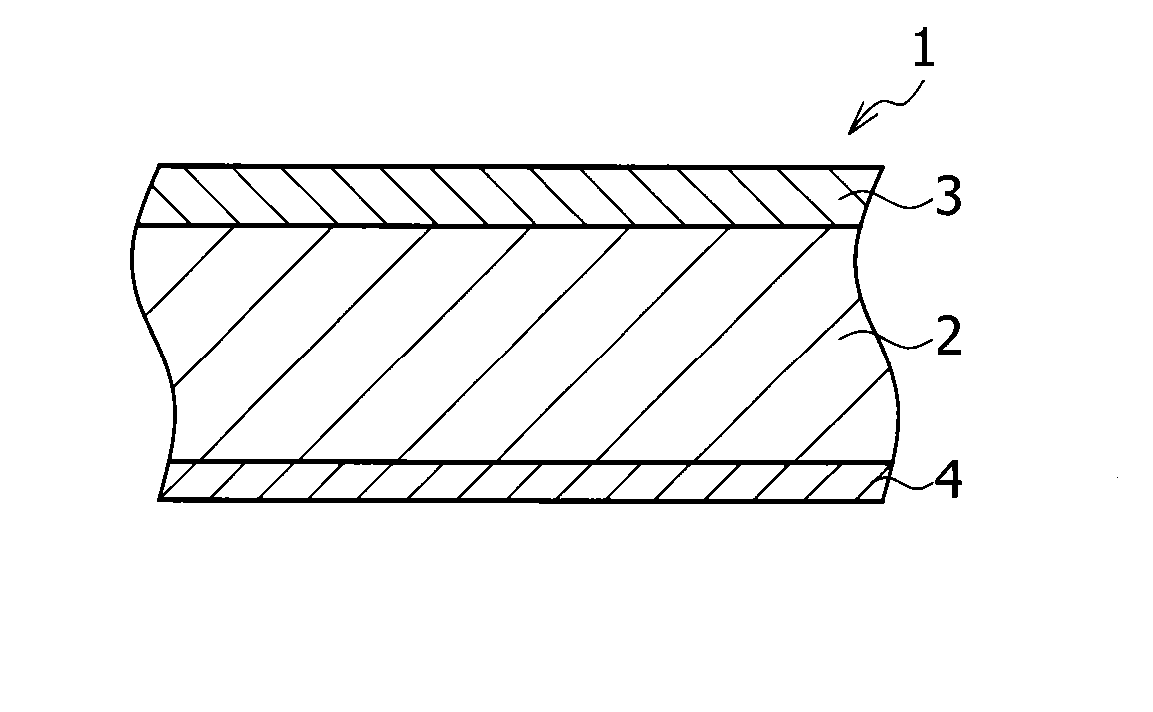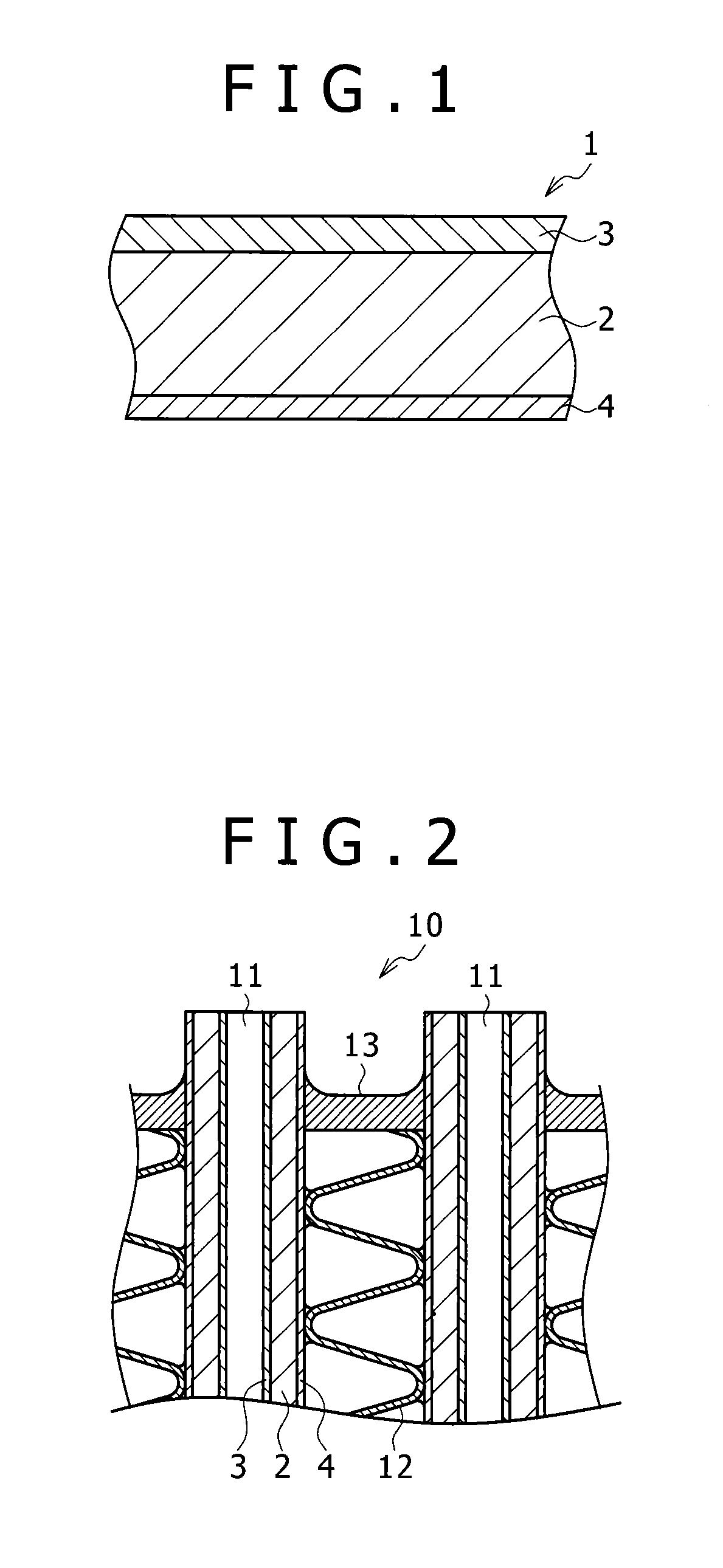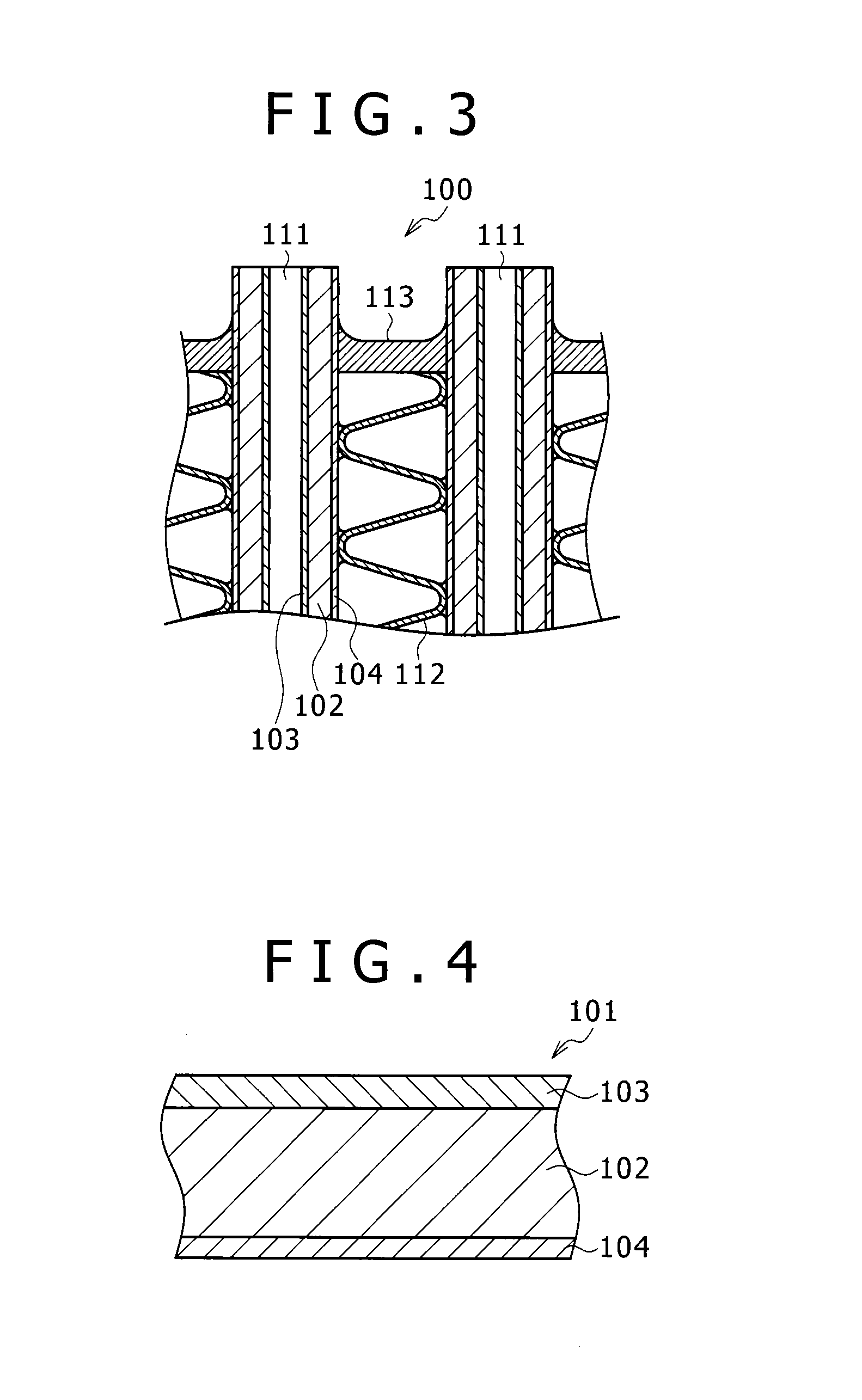Aluminum-alloy clad sheet
a technology of alloy and clad sheet, which is applied in the direction of manufacturing tools, soldering devices, light and heating equipment, etc., can solve the problems of insufficient strength and excellent erosion resistance, average grain size and number density, and achieve the effect of improving strength and erosion resistan
- Summary
- Abstract
- Description
- Claims
- Application Information
AI Technical Summary
Benefits of technology
Problems solved by technology
Method used
Image
Examples
examples
[0157]The invention is now more specifically described with Examples. Examples and comparative examples of the aluminum-alloy clad sheet of the first technology are described, and Examples and comparative examples of the aluminum-alloy clad sheet of the second technology are then described.
(Examples and Comparative Examples of Aluminum-Alloy Clad Sheet of First Technology)
[0158]Clad sheets (brazing sheets) 1 including 3000-series aluminum alloy cores 2 having compositions A1 to T1 shown in Table 1 were produced, and structures of the cores 2 were investigated. Each of the clad sheets 1 was then subjected to heating equivalent to brazing, i.e., heated at 600° C. for 3 min as simulated brazing, and was then cooled at an average cooling rate of 100° C. / min, and the structure of the core of the clad sheet subjected to the heating equivalent to brazing was investigated. Table 2 shows results of the investigations. In addition, mechanical properties and erosion resistance of each of the c...
PUM
| Property | Measurement | Unit |
|---|---|---|
| diameter | aaaaa | aaaaa |
| diameter | aaaaa | aaaaa |
| diameter | aaaaa | aaaaa |
Abstract
Description
Claims
Application Information
 Login to View More
Login to View More - R&D
- Intellectual Property
- Life Sciences
- Materials
- Tech Scout
- Unparalleled Data Quality
- Higher Quality Content
- 60% Fewer Hallucinations
Browse by: Latest US Patents, China's latest patents, Technical Efficacy Thesaurus, Application Domain, Technology Topic, Popular Technical Reports.
© 2025 PatSnap. All rights reserved.Legal|Privacy policy|Modern Slavery Act Transparency Statement|Sitemap|About US| Contact US: help@patsnap.com



